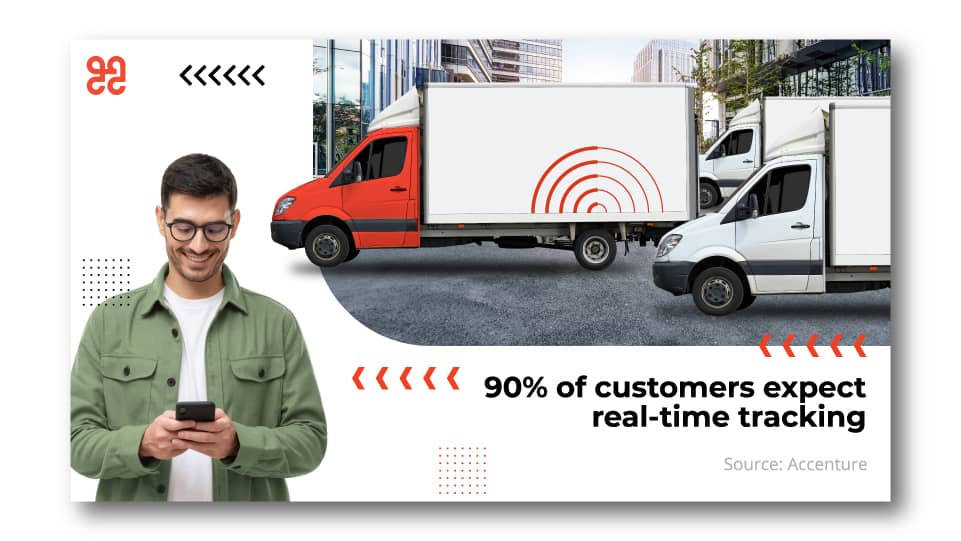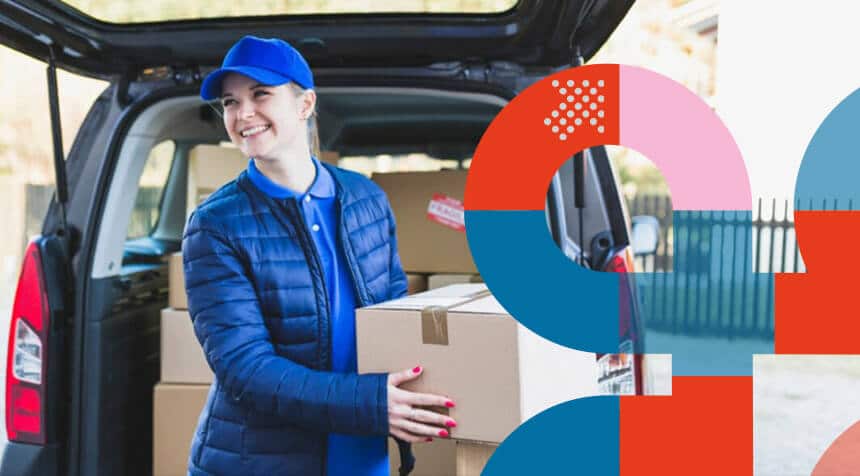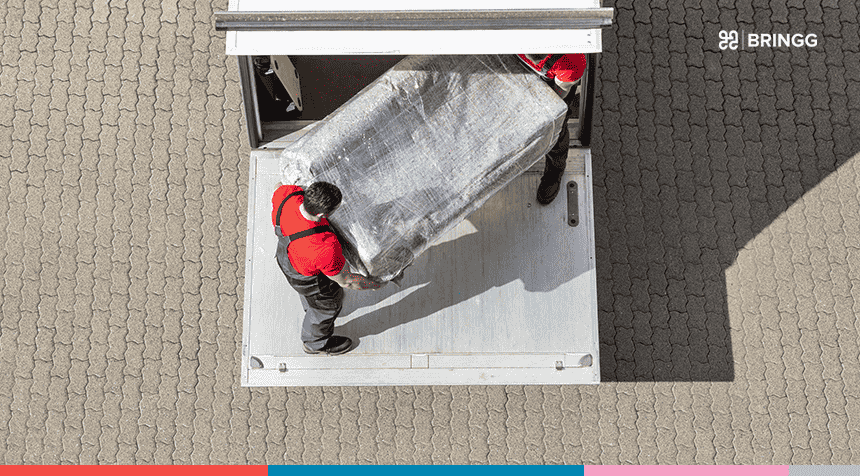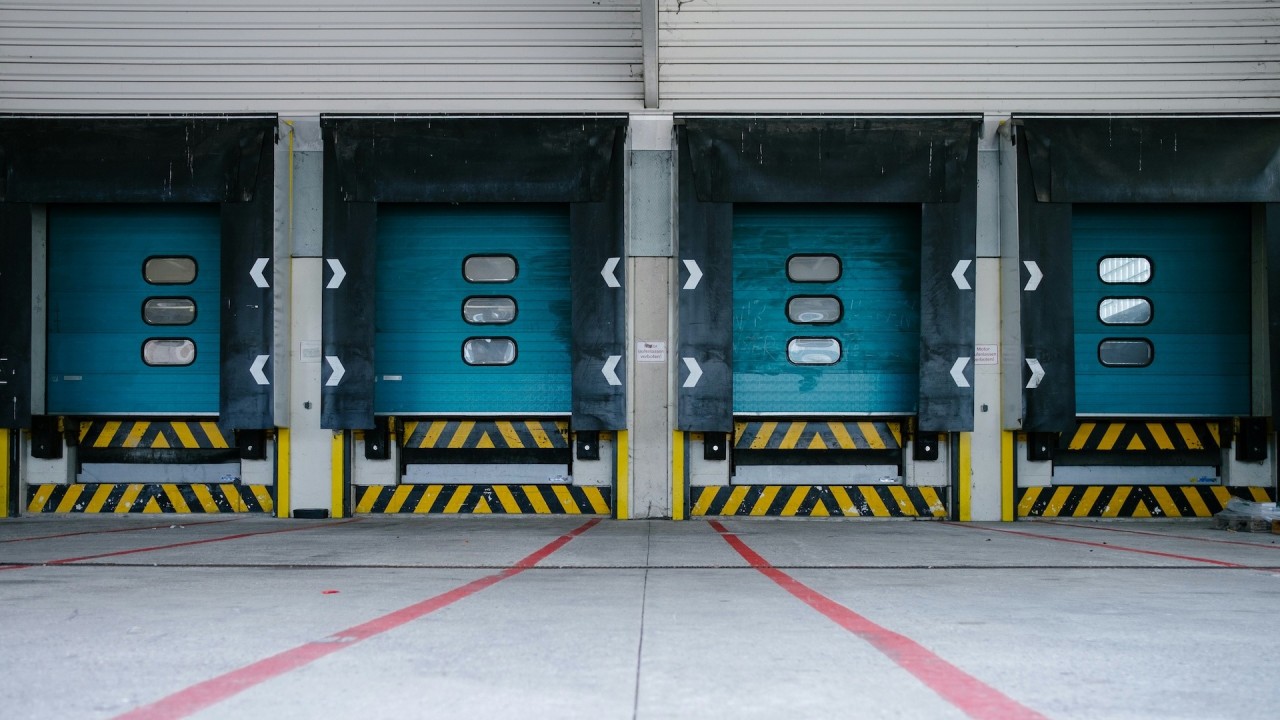As eCommerce and online fulfillment grow, using a last mile carrier is becoming an increasingly important way for shippers to increase last mile delivery capacity. With logistics providers as a whole overwhelmed by delivery volumes, shippers are turning to work with multiple 3PLs and last mile carriers to grow their last mile delivery business.
Looking for the best carrier for your operational and business needs? Wondering how to manage multiple last mile carriers? Here’s what you need to know.
What is a last mile carrier?
A last mile carrier is a logistics provider that is responsible for the final stage of delivery to consumers. They often come in the form of a fleet with vehicles which are used by a retailer to provide last mile delivery services to its customers. Their performance forms a large part of the last mile delivery experience, since the customer comes face-to-face with the carrier’s delivery driver.
Which last mile carrier model is right for your business?
Your last mile carrier will be the face of your brand with your customers, so it’s important to choose wisely.
There are multiple last mile carrier models to choose from. Each has its benefits and disadvantages according to business size, needs, and the tech integrated both for the retailer and the carriers.
Working with a single carrier
When first looking for last mile delivery service providers, some businesses opt for a single fleet carrier option. The benefit is that this method is relatively easy to track and it can be convenient to work with a single carrier to ensure a positive delivery for customers. However, with eCommerce fulfillment booming and last mile carriers overwhelmed with goods, fleets often aren’t able to keep up with package volumes. If the fleet you’re working with can’t keep up, customers will suffer and with it, your brand.
Working with a 3PL
Working with 3PL (third party logistics providers) gives businesses the option of having multiple fleets while not having to handle the logistics behind arranging the fleets. This can be advantageous as you won’t be relying on a single fleet but still bears the question if the specific 3PL will be able to handle deliveries and meet expectations as provided by the specific retailer. In addition, when working with a single 3PL, they may not be able to accommodate all of the specific requests and desires of a certain business in terms of speed or visibility.
Working with multiple fleets via a tech platform
Working directly with multiple fleets gives organizations the opportunity to provide excellent customer experience while not being dependent on a single fleet or 3PL. In order to use multiple fleets successfully, businesses must manage them through a third party delivery platform.
When using a platform, businesses get insights into their last mile carriers, including last mile carrier tracking, delivery speed and more. This data helps explain performance and supports informed decision making.
If the tech stack you’re using has an intelligent fleet management system, you can dispatch flexibly, based on the considerations that matter the most to you, whether it’s delivery speed (don’t forget that 69% of consumers say that fast shipping would lead them to place an online order), delivery costs or prioritizing eco-friendly fleets.
Using crowdsourced delivery has become a popular and convenient option for both logistics providers and retail companies. This can be your main logistics carrier or as a “stand-by” option for busy times of year or even hours of the day. As with all third party fleets, crowdsourced delivery usually works via a pay-as-you-go model, leaving little risk to the business if the service isn’t needed in the end.
Read: Third Party Delivery Done Right: Why We Build a Delivery Hub >
How to select a last mile carrier: key considerations
Now that we’ve taken a look at the different last mile carrier options, it’s time to understand how to make the right decision for your business.
Last mile tracking for carriers
Real-time last mile tracking is critical to both measuring performance and providing customers with good delivery experiences. Customers should have access to tracking information throughout the entire last mile delivery process.
Last mile tracking can refer to several different things:
Shipment tracking or order tracking gives customers real-time visibility into where their order is by tracking events in the shipping process, keeping customers happy throughout the delivery process.
Last mile carrier tracking is the process of enabling visibility into the driver location data in real time. This information is necessary to ensure efficiency and to analyze the carrier’s performance. For carriers, this is a value-added capability, as visibility is one of the most requested technologies from shippers and improves the last mile delivery experience for their customers.
_________________
Looking for last mile carrier tracking?
Visit Bringg for Logistics
_________________
The challenge in last mile tracking is that the proper last mile technology must be in place to provide accurate and reliable information. If the tracking information is wrong or outdated, customers may become frustrated and confused, resulting in a negative delivery experience. (When the customer’s experience is negative, no matter whose fault it is, customers will always automatically blame the retailer.)
Service levels
When looking at different last mile carriers, ask:
Are there multiple service levels? Can you customize the carrier’s services according to your business needs? Almost every company has different last mile service needs, and it’s important that the carriers you work with can provide what you’re looking for. For example, a customized service level may allow you to configure the types of last mile delivery services that you want to offer. This could mean a higher service level with over-the-threshold or same-day delivery or a lower level with multi-day fulfillment.
Last mile delivery models
The easier the order fulfillment is for customers, the more business it will garner. Consumers want access to their orders quickly, safely and conveniently. Retail brands and eCommerce companies need delivery service providers that can step up and provide a wide range of shipping possibilities to meet the ease and convenience that customers expect.
In addition to traditional (multi-day) fulfillment models from warehouses, retailers should inquire regarding:
- Ship from store vs. ship from hub options – Does the last mile carrier provide the option to ship from store or only work with regional warehouses or distribution centers? This may impact their ability to provide same-day or next-day delivery options.
- Same-day, on demand delivery options – The use of same day delivery has increased by 50% since 2020. This is a major change that shows the change in customer expectations with over 30% of customers using this option today. If you have the retail footprint to enable same-day delivery, you need to look for a last mile carrier that can provide it. Working with multiple carriers is also an option.
- Point to point vs. batching – one order at a time vs. multiple ‘batched’ orders per route.
Integration and delivery services
In a recent survey, logistics and transportation leaders were asked which technology would help them most differentiate and win new business. The top answer (43%) was easy integration to enable multiple delivery models. At the same time, shipper integration was also listed as the top last mile operational pain point (46%).
To facilitate premium delivery services and models like same-day, businesses need carriers that offer good integration to connect data, resources and operations in real-time (which is currently lacking for many). When searching the logistics industry for the right provider, check which integrations they offer and which tech solution (if any) they use for this.
The bottom line: If you’re a retailer and the shipping carrier that you’ve chosen can’t integrate with your POS system, you won’t be able to create an efficient shipping process. If you’re a logistics provider, then enabling easy integration for a shipper will be key to scaling your last mile operations.
Shipping costs
Lower costs are important, but they’re not the only factor to consider. For example, next-day shipping will always be more expensive than longer shipments. Compare not only overall shipping costs, but the exact services rendered, and how it compares with other shipping companies.
Driver Capacity
For carriers today, a lack of drivers is one of the main blockers to meeting delivery volumes and SLAs.
Drivers are in high demand – especially those with specialized skill sets. Check whether the carrier in question can guarantee enough drivers to cover your needs in the relevant market.
Innovative last mile technology
With an increase in volume comes an increase in complexity. Businesses must look to update their technology if they want the capacity to handle the increase in deliveries and returns they now face.
Digitizing the entire last mile delivery process is key to handling greater delivery volumes at the quickest speed possible. This process gives all stakeholders involved the tools to be more efficient and provide exceptional delivery experiences.
Examples include:
- Real time quotes that are integrated with a retailer’s eCommerce site
- An automated delivery system for optimal efficiency. Without automation, there is essentially no way to increase delivery services’ capacity and speed.
- Intelligent route optimization to increase drop density
- Real time carrier tracking gives both businesses and consumers visibility about where their goods are along the last mile.
- Machine learning capabilities to analyze and improve weak areas that affect time to deliver. This is a major technological advancement that can take delivery services to the next level.
Customer experience
If you want to win more business, focus on creating exceptional customer experiences. In addition to carrier tracking, check whether the carriers offers any of the following options for customers:
- Automated scheduling and rescheduling- According to Loqate, 8% of domestic first-time deliveries fail, costing retailers an average of $17.20 per package. If the carrier provides automated scheduling and rescheduling, this can significantly reduce cost and improve the delivery experience.
- Real-time customer communication with delivery drivers through a dedicated app
- Automated SMS alerts
- Using white label notifications and branded tracking for a branded delivery experience
- Customer ratings that make it easy for customers to give feedback
Choosing your last mile carriers for exceptional last mile delivery
As delivery expectations are increasing and eCommerce is growing at rapid speeds, increasing delivery capacity with multi carrier management is an important step to meet demand. Choosing the right last mile carriers can be the key to rapidly and cost-effectively scaling delivery and offering differentiating services.
Frequently asked questions:
Last mile delivery describes the process when a parcel makes its way to the customer. A driver picks up packages from a middle mile location like a micro-fulfillment center or warehouse, or even a local store, and delivers them to the end customers.
In last mile tracking, visibility into package location must be provided not only to internal teams like a dispatcher, but also to shippers and end customers. Last mile tracking is particularly complicated because it requires different levels of visibility for a variety of stakeholders. 
Deliveries via a last mile carrier traditionally required several days, and involved scheduling in advance. Today, some last mile carriers offer same-day delivery. These are usually fleets based in urban areas delivering from local fulfillment or distribution centers and retail locations.



